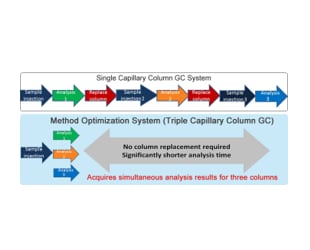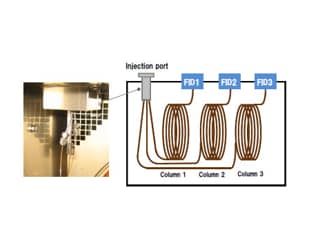Method Optimization System Triple Capillary Column GC

Simultaneous Three-Column Analysis with a Single Sample Injection and No Column Replacement Provides More Efficient Investigation of Separation Conditions
Features
-
Due to the impurities or organic solvents that can remain in drugs, it is important to optimize the analytical method. However, investigating the analytical conditions for...
-
Columns are installed using the same graphite ferrules and nuts used for a normal single capillary column.Tightening the graphite ferrules and...
News / Events
-
Explore GC Systems for Official Standards
Each Shimadzu System GC Analyzer is meticulously built and rigorously tested to meet the specific analytical needs outlined by applicable industry standards, providing dependable performance for a wide range of applications.
-
Unlock New Possibilities with the Fully Loaded Brevis GC-2050: Expanded Inlets, New Detectors, Lower Costs
Explore how the Shimadzu GC Brevis GC-2050 can help your lab achieve significant cost savings and enhance efficiency.
-
PONAsolution has been released
The PONAsolution is an analytical software for LabSolutions that effectively supports PONA Analysis and Detailed Hydrocarbon Analysis.
-
User's Voice from Nanospace Catalysis Research Unit, Institute of Integrated Research (IIR), Institute of Science Tokyo
From the Development of Zeolite Catalysts to Achieving Carbon Neutrality using Gas Chromatography
-
The Gas Chromatograph Brevis GC-2050
The Gas Chromatograph Brevis GC-2050 has been fully updated -compact, powerful, and cost-efficient- crafted to elevate your productivity to unprecedented levels.
-
COA Search for SH Series GC Columns is now available
A Certificate of Analysis (COA) is a document that ensures the product meets the shipping requirements. COA Search for SH Series GC Columns has been released.




